
Red Bull Media House Case Study

Red Bull Media House Banks on AMD for Storytelling Excellence
AMD Ryzen™ Threadripper™ PRO processors help artists rip through VFX projects with up to 96 cores for multithreaded rendering and high frequency cores for lightly threaded workloads.
Explore how Red Bull Media House, the award-winning boutique film operation affiliated with the Austrian energy drink manufacturer is using AMD Threadripper™ PRO processors to put extraordinary events to film.
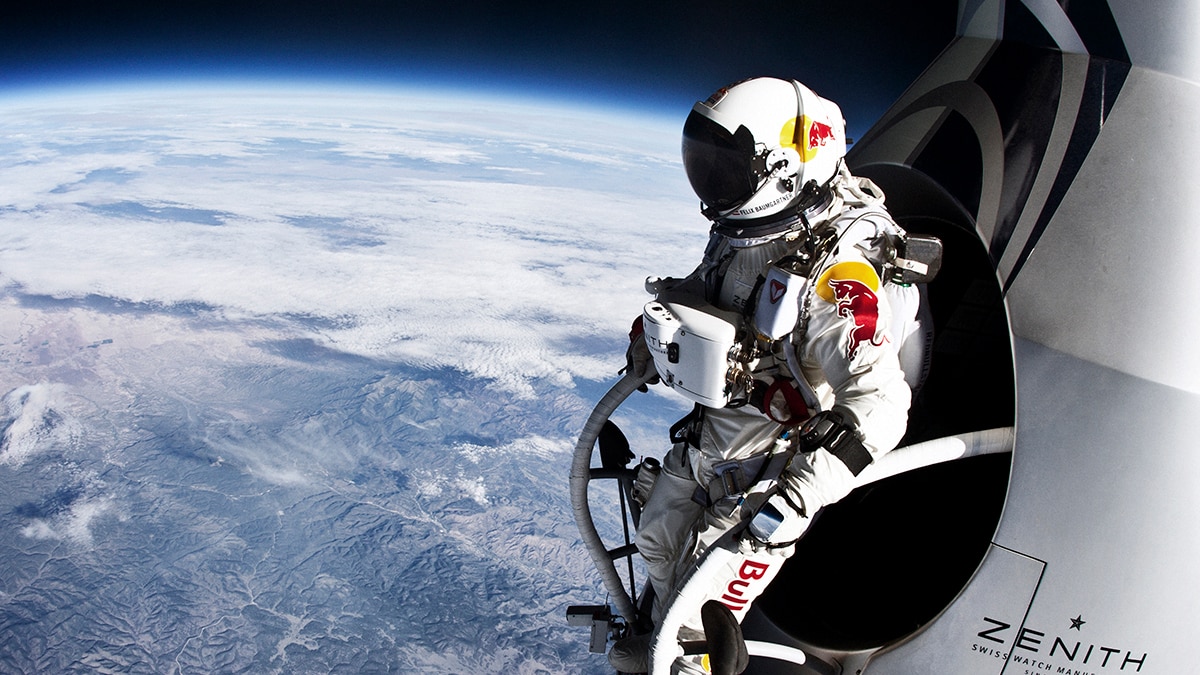
Showcasing world-leading athletes and their superhuman feats – this is what Red Bull is known for. Superlatives are par for the course for the Austrian energy drink manufacturer and for Red Bull Media House, the affiliated award-winning boutique operation that commits these extraordinary events to film. Stefan Knerrich Rubin– Director of Post Production, Engineering & Technology at Red Bull Media House North America – talks to us about the process of creating content for such once-in-a-lifetime events. “The challenge is always the same,” he says. “You have athletes in one of the most remote locations on the planet. You have a Formula One car on the San Francisco Bay Bridge. You have a skydiver jumping from the stratosphere. You better shoot that from as many angles as you can. Because you only do it once.”
Breaking records and barriers
Knerrich Rubin was there along with eight million other online viewers to witness Felix Baumgartner freefall 24 miles (39.96 km) from space. Baumgartner successfully became the first person to break the sound barrier without an aircraft, taking a mere 34 seconds to reach Mach 1.25 at 844 miles per hour (1,358 km/h). Red Bull Stratos not only broke the sound barrier, it broke other records too – for the highest altitude jump, the highest manned balloon flight, and for the most ever watched YouTube livestream. “Google was afraid that we would crash YouTube,” Knerrich Rubin recalls, “that’s how high the numbers were.” Capturing the leap that was literally out-of-this-world was a gigantic undertaking. “We had more than 30 cameras, and many running continuously for four and a half hours. You can imagine the amount of material we accumulated,” Knerrich Rubin recalls.
Meticulous planning, a powerful technical infrastructure, and fast processing speeds were crucial to their success. “Technology has progressed dramatically since then, of course, and it would have been nice to have machines back then like we have today.”
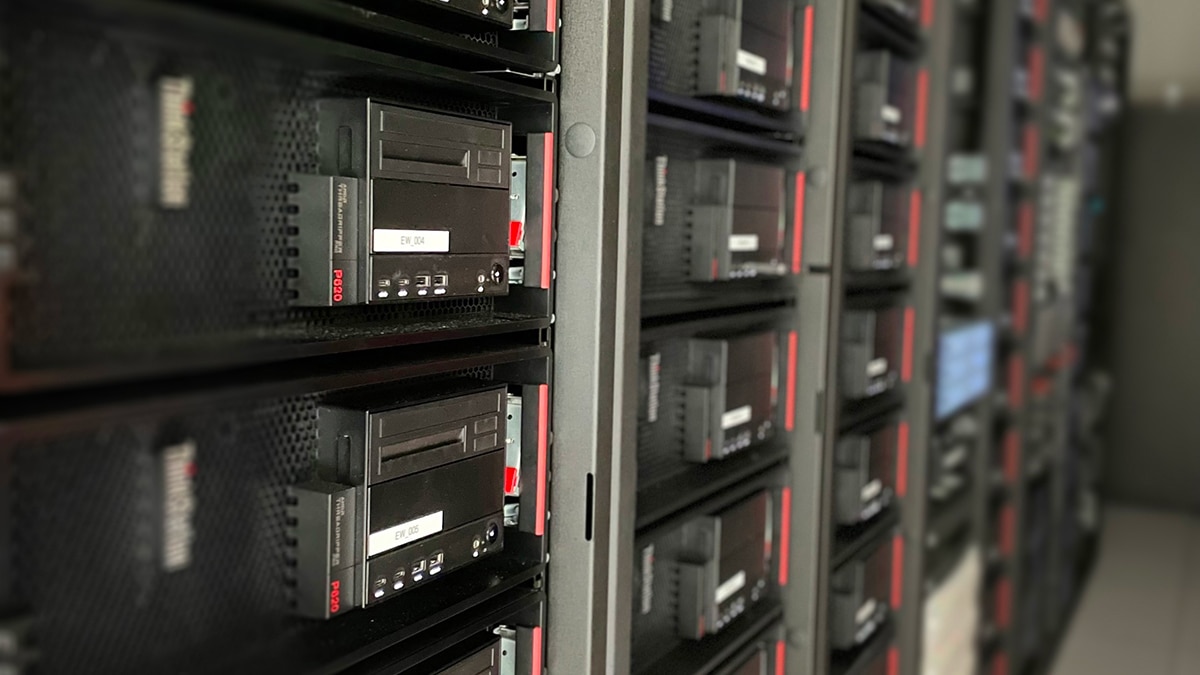
Speed is of the essence
Today, the projects are no less sensational, and the pace of production more accelerated. The post production team in North America, located in Santa Monica, is typically juggling 10-15 projects at any given time. “Faster is better, and yesterday is better than tomorrow,” is the motto they live by. Quick turnaround times are routine – projects they work on are often posted within hours after the event itself. To complicate matters, editors are spread out all across the US and beyond, with some creative teams working from Great Britain, France or Brazil. “Especially because of Covid, I was looking for solutions early on that would allow us to work remotely with high performance but with centralized hardware and shared storage. We decided to use a solution that originated in the world of remote gaming,” Knerrich Rubin explains. He also relies on AMD Ryzen™ Threadripper™ PRO processors to get the job done right. They are ideal for remote systems and can process vast volumes of video footage quickly.
Powerful performance, versatile application
Filming and editing a live performance in Los Angeles of hip hop superstar producer Metro Boomin along with a symphony orchestra for the Red Bull Symphonic series was a textbook example for the high performance of the systems in Santa Monica. Ingesting and preparing Ultra HD source footage from 15 high-end digital cinema cameras overnight for the start of the edit the next day was done quickly and efficiently, as was the fast-turnaround edit that followed. “The AMD Threadripper™ CPUs have the speed, the performance, the flexibility, and it’s easy to install. The price-to-performance ratio is also spot on,” Knerrich Rubin comments. The Threadripper™ PRO 5000 WX-Series processor is designed for versatile workstations and all key professional applications – from Adobe to VIZRT. More than 40 editorial and production systems run on the most powerful CPUs of AMD in Santa Monica. The Red Bull Media House editors in North America are equipped with PRO 16-cores, the graphics team with the 32-core solutions. “For editing, we use all industry-standard non-linear editing applications and VFX plugins for ingest and edit prep, color grading and playout,” explains Knerrich Rubin. They all count on the streamlined post production workflows that AMD Threadripper™ PRO processors’ eight memory channels enable. “It was important for me that the performance fits, the model fits, and that you can upgrade them.”
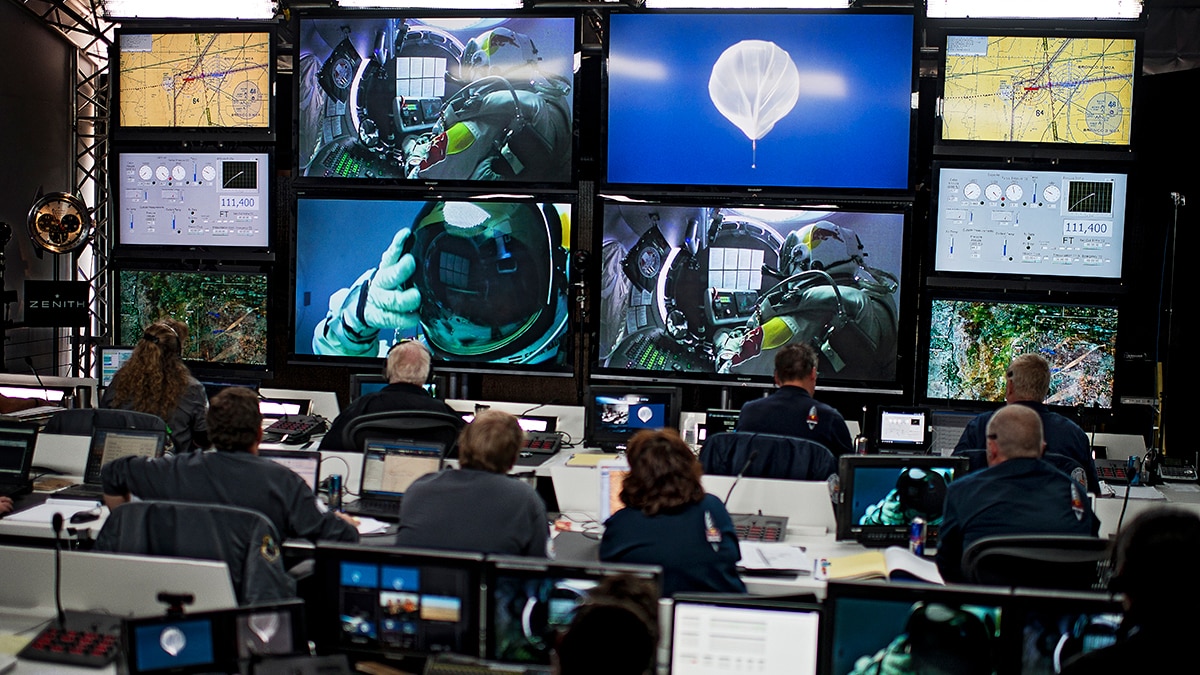
A powerhouse of content creation
Content-creation is Red Bull Media House’s mandate all over the world. Every year, it produces around 150,000 minutes of video content for more than 20,000 media assets. Over 850 personalities in 200+ disciplines and 1,500 events in 175 countries around the world have been celebrated. And AMD technology is vital to this storytelling apparatus. Award-winning content, from two-minute shorts that highlight spectacular stunts to feature-length documentary films that paint poignant portraits — they all require the right tools to support the Red Bull Media House teams in their quest to showcase athletes and artists as they pursue their visions and ideas.
Case Study Profile

Redbull Media House
Redbull Media House North America Must Haves
- OS for remote collaboration
- Excellence price-to-performance ratio
- Easy to install
- Easy to maintain
Ticking off all of the boxes to support the content creation powerhouse is AMD Ryzen Threadripper PRO 5000 WX-Series processors
Ripping with AMD Threadripper Processor
AMD Ryzen Threadripper PRO processors deliver up to 64 cores for multithreaded simulation and rendering along with high frequency cores for lightly threaded workloads.
They can help you rip through the most demanding VFX projects.
AMD Ryzen Threadripper PRO 5995WX processor helps artists accelerate video editing, color correction, visual effects, and motion graphics up to 32% faster than competing workstation processors 1 and up to 3% faster than the previous generation of AMD Threadripper PRO 2 processor. Check out the Solution Guide
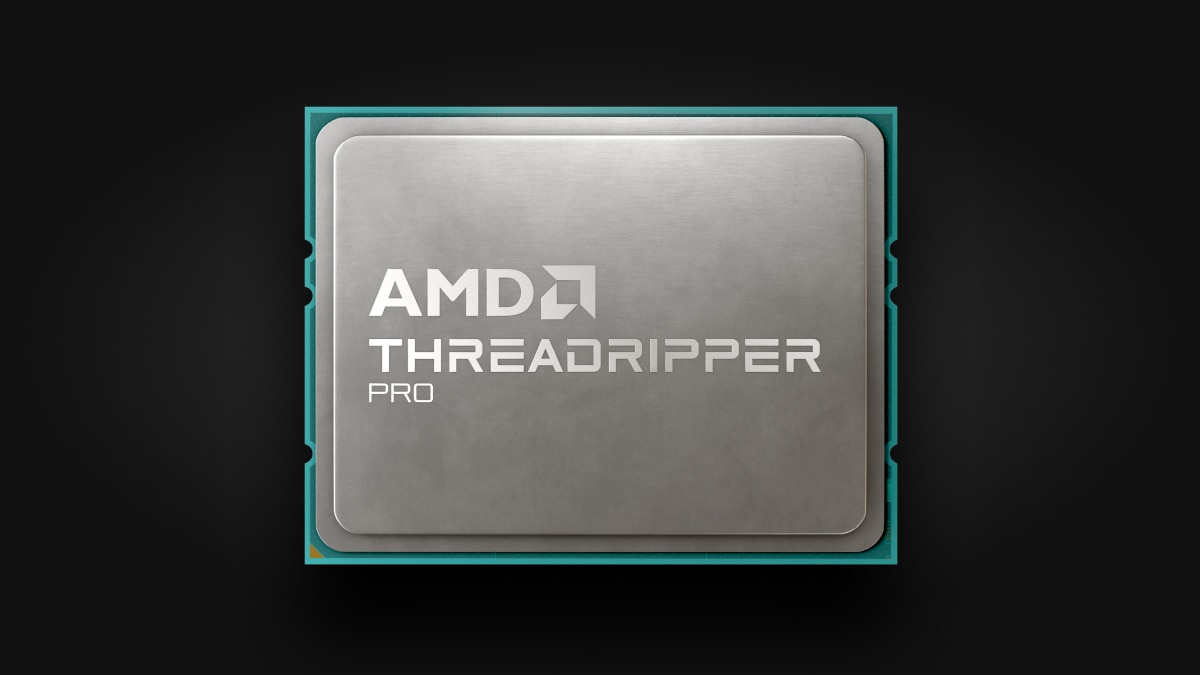
AMD Ryzen™ Threadripper™ PRO processors deliver up to 96 cores for multithreaded simulation and rendering along with high frequency cores for lightly threaded workloads and can help you rip through the most demanding design projects.
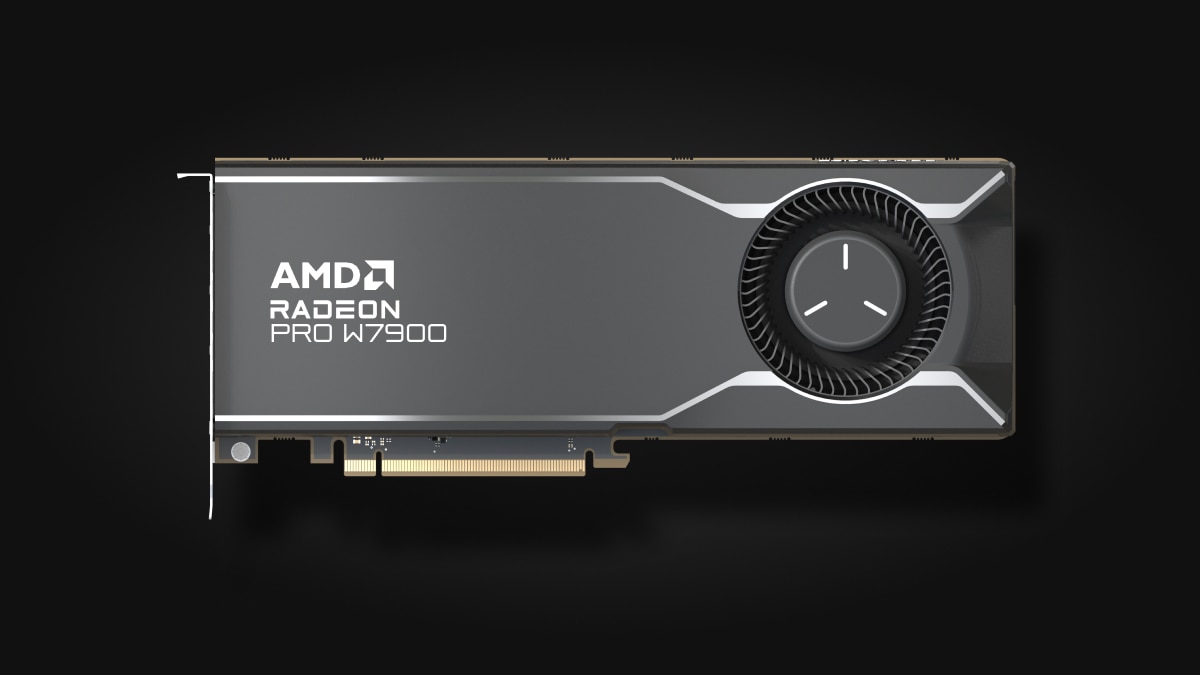
AMD Radeon™ PRO workstation graphics help engineers advance product development workflows to accelerate time-to-market with AMD RDNA™ 3 Architecture; the world’s first GPU with chiplet technology.
Meet the Experts Webinars
AMD partner webinar series, Meet the Experts, is packed with information about industry insights, new products, and much more. Choose from on-demand webinars or even register for upcoming webinars.
Revolutionizing Media & Entertainment Workflows with AMD Processors
Transforming Creative Workflows in Media & Entertainment: An Exclusive Webinar with AMD, Adobe, and Vū Technologies Corp
Built for Creative Professionals: AMD Ryzen™ Threadripper™ 7000 Series Processors
AMD Ryzen™ Threadripper™ PRO Processors: Riding the Third Wave of Workstation Computing

Get in touch with a business expert and find out what AMD can do for you.
Related case studies.
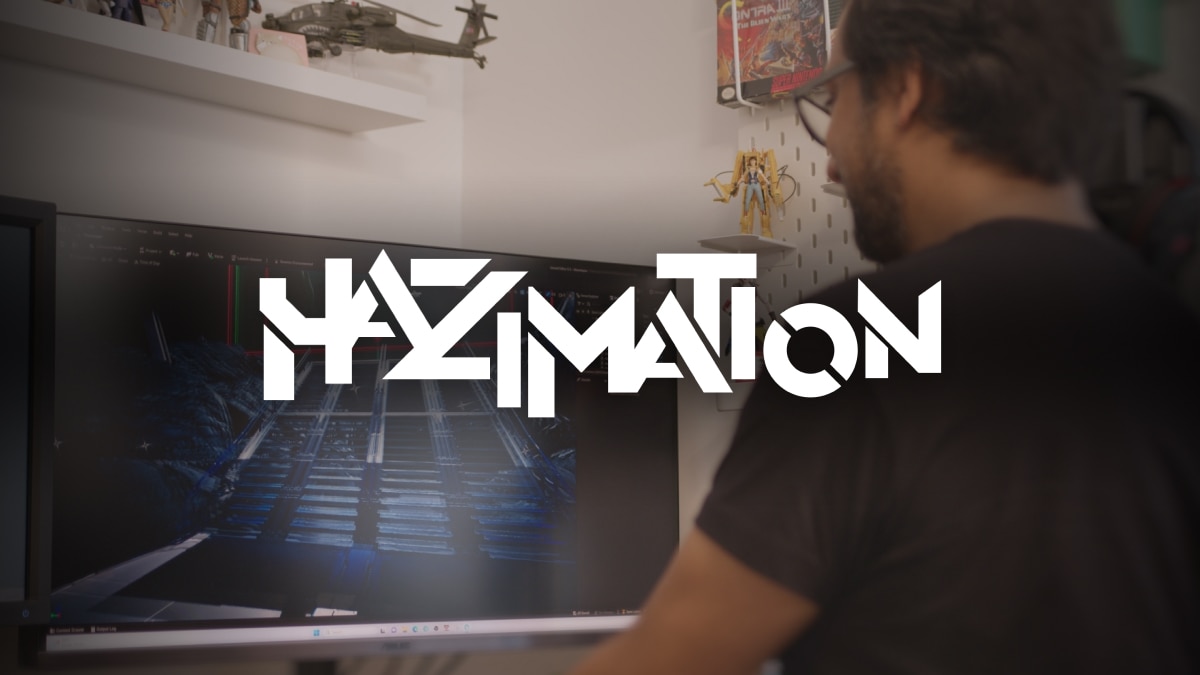
HaZimation Accelerates Transmedia Production with AMD
November 30, 2023
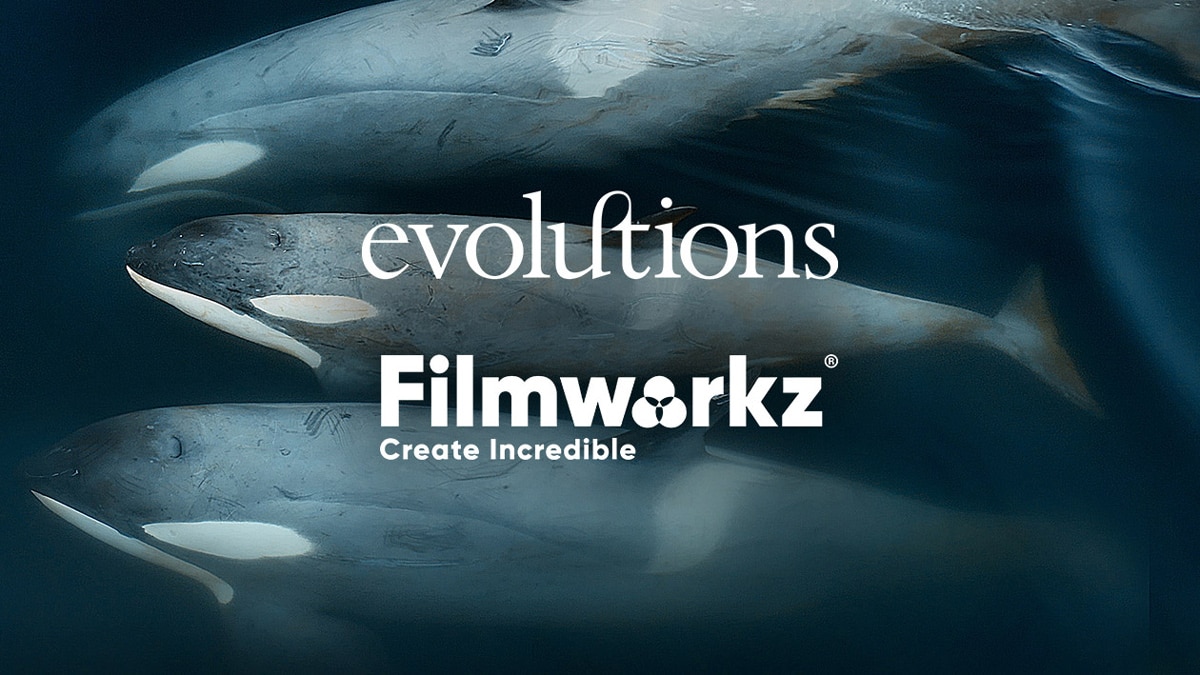
Evolutions transforms Filmworkz workflows with AMD
November 14, 2023
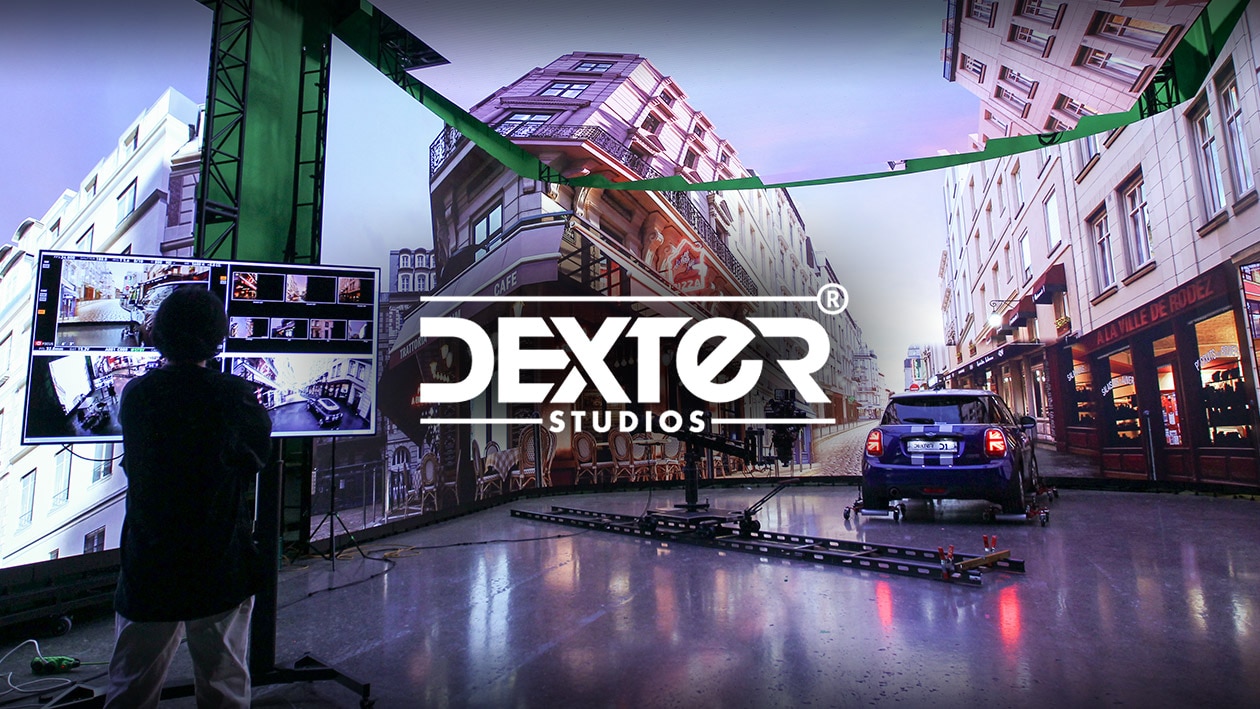
Dexter Studios unleashes VFX creativity with AMD Ryzen™ Threadripper™ PRO CPUs
October 18, 2023

9.9 Group optimizes online media with AMD EPYC™ CPU-powered Amazon Web Services
October 04, 2023
All performance and cost savings claims are provided by Red Bull Media House and have not been independently verified by AMD. Performance and cost benefits are impacted by a variety of variables. Results herein are specific to Red Bull Media House and may not be typical. GD-181
©2024 Advanced Micro Devices, Inc. All rights reserved. AMD, the AMD Arrow logo, EPYC, and combinations thereof are trademarks of Advanced Micro Devices, Inc. Other product names used in this publication are for identification purposes only and may be trademarks of their respective companies.
- Based on AMD performance lab testing as of January 31, 2022 using DaVinci Resolve to compare the performance of AMD Ryzen™ Threadripper™ PRO 5995WX reference system configured with 8x32GB DDR4, NVIDIA Quadro RTX A5000, 1TB SSD, Win 11 vs. a similarly configured BOXX APEXX4 workstation with an Intel® Xeon® W-3375 processor. Results may vary. CGP-41
- Based on AMD Labs testing as of January 31, 2022 using the Chaos V-Ray benchmark, the Adobe After Effects (Puget Systems) benchmark, the Chromium compile benchmark, the SPECapc® for PTC Creo 3.0 Graphics Composite metric, SPECapc® for Solidworks 2021 CPU Composite metric, the Ansys CFX benchmark, the Revit RFO model creation benchmark, DaVinci Resolve (Puget Systems) benchmark, Luxion Keyshot benchmark, and the Cadalyst AutoCAD benchmark to compare the Ryzen™ Threadripper™ PRO 5995WX reference system configured with 8x32GB DDR4 3200, NVIDIA Quadro RTX A5000, 1TB SSD, Win 11 vs. a similarly configured Ryzen™ Threadripper™ PRO 3995WX reference system. Results may vary. SPEC and SPECapc are registered trademarks of the Standard Performance Evaluation Corporation. See www.spec.org for more information. CGP-38
- Bahasa Indonesia
- Sign out of AWS Builder ID
- AWS Management Console
- Account Settings
- Billing & Cost Management
- Security Credentials
- AWS Personal Health Dashboard
- Support Center
- Expert Help
- Knowledge Center
- AWS Support Overview
- AWS re:Post
Customer Stories / Media & Entertainment
Red Bull Media House Makes Media Workflows Location Independent Using AWS for the Edge
As one of the world’s premium providers of media content, Red Bull Media House is reimagining its postproduction processes.
Overview | Opportunity | Solution | Outcome | AWS Services Used
Facilitates
ability of production personnel to work from anywhere
turnaround time for some projects from months to days
retrieval time of high-resolution assets
cost of storing media assets
limits on compute and throughput
The company’s projects, including thousands of live events around the world, rely on physical hardware and production teams that are often tied to specific locations. Production personnel collaborate on projects that might take months to complete, using expensive equipment to turn out high-quality productions that are viewed around the world.
To become more location independent, Red Bull Media House operates in the cloud, powering most of its use cases and workloads using Amazon Web Services (AWS). In particular, the company uses AWS for the Edge , which brings data processing and analysis closer to endpoints, to lay the groundwork for a flexible, scalable, decentralized postproduction workflow. Production teams collaborate on projects in the cloud with the ability to work from anywhere in the world, and they continue to meet their high production standards in a cost-effective way that adjusts dynamically to the changing needs of the business.

Opportunity | Meeting the Postproduction Needs of a Dynamic Global Business
As the multiplatform media arm of Red Bull energy drink, Red Bull Media House’s mission is to inspire with extraordinary stories and media experiences from both direct-to-consumer productions and through partnerships. These media products include global live broadcast events, exciting and inspiring local stories encompassing original short- and long-form programming, and feature films from around the world. Well known globally for its high-quality, adventurous programming, the company scales production resources in response to the parent company’s strategic decision-making.
A fundamental aspect of large-scale productions involves onboarding the best available freelance editors, graphics artists, and other talent, who are spread across multiple time zones and often are most creative at nontraditional hours. They collaborate with in-house producers, editors, and other personnel who work at production facilities in Salzburg, Austria, or Santa Monica, California. Production personnel require access to extremely large video files—under certain circumstances, 1 hour of footage shot in 4K can consume nearly 140 GB of storage per hour. To share footage, production teams often must ship hard drives around the world. And productions can stall as editors wait for high-resolution footage to load.
Red Bull Media House also needs ultraperforming compute power to process video at the highest possible bit rate, the speed at which video transfers. For example, the bit rate of 4K footage starts at about 100 Mbps. Red Bull Media House needs to optimize the bit rate so that productions don’t glitch.
In early 2022, Red Bull Media House began to explore the idea of postproduction in the cloud. It deployed small proofs of concept on a self-developed solution in parallel with a backup on-premises workflow.
Convinced of the concept’s feasibility, Red Bull Media House turned to the AWS account team, which involved AWS subject matter experts in media and entertainment as well as an AWS Partner to provide technical guidance and architectural support. They have been incorporating feedback from users as they complete selected projects without disturbing business processes or experiencing downtime.
Solution | Finding Efficiency in the Storage and Processing of Critical Media Workloads
Using AWS for the Edge solutions, Red Bull Media House is building an infrastructure to support a consistent hybrid experience. Rather than invest in fixed servers, Red Bull Media House powers its media workstations using Amazon Elastic Compute Cloud (Amazon EC2), which provides secure and resizable compute capacity for virtually any workload. Production personnel work from anywhere and are not limited by on-premise throughput.
Red Bull Media House is building its media archive on Amazon Simple Storage Service (Amazon S3), an object storage service offering industry-leading scalability, data availability, security, and performance. Red Bull Media House uses Amazon S3 to store projects that are in progress but not actively being worked on, saving costs while maintaining short retrieval time when an asset is needed.
To bridge the gap between its on-premises resources and workloads in the cloud, Red Bull Media House uses AWS Direct Connect , which creates a dedicated network connection to AWS from on-premises resources. In fact, Red Bull Media House has cut its turnaround time to deliver certain content from months to days.
By operating in the cloud, Red Bull Media House can employ the best talent in the world for virtually any given project, regardless of time zone. Creative personnel don’t have to travel to a production house or live event, which significantly reduces Red Bull Media House’s carbon footprint. Additionally, the company has less need to ship heavy postproduction equipment, another important factor for the company’s sustainability goals.
Outcome | Building on a Foundation in the Cloud for Future Workloads
Over the next several years, Red Bull Media House plans to continue to work alongside the AWS account team and AWS Media and Entertainment experts, using their domain-specific knowledge to build on the foundation so that they can better address the business’s dynamic requirements.
About Red Bull Media House
The multimedia arm of Red Bull energy drink, Red Bull Media House is an award-winning, globally distributed media company that produces live broadcast events, original programming, and feature films in more than 160 countries.
AWS Services Used
Amazon Simple Storage Service (Amazon S3) is an object storage service offering industry-leading scalability, data availability, security, and performance.
Learn more »
AWS for the Edge
AWS edge services deliver data processing, analysis, and storage close to your endpoints, allowing you to deploy APIs and tools to locations outside AWS data centers.
Learn more »
Amazon Elastic Compute Cloud (Amazon EC2) offers the broadest and deepest compute platform, with over 750 instances and choice of the latest processor, storage, networking, operating system, and purchase model to help you best match the needs of your workload.
AWS Direct Connect
The AWS Direct Connect cloud service is the shortest path to your AWS resources. While in transit, your network traffic remains on the AWS global network and never touches the public internet.
More Media & Entertainment Customer Stories
no items found
Get Started
Organizations of all sizes across all industries are transforming their businesses and delivering on their missions every day using AWS. Contact our experts and start your own AWS journey today.

Ending Support for Internet Explorer
- Online Video
- AdvertisingShift
- MagazineShift
- NewspaperShift
- Free Speech
- PoliticalShift
- Entrepreneurship
- Law & Ethics
- Tools & Tips
- Perspectives
- #EdShift Chats
- Best Practices
- Case Studies
- Social Metrics
- Tools & Resources
- #MetricShift Chats
- ADVERTISEMENT
When a Brand Becomes a Publisher: Inside Red Bull’s Media House
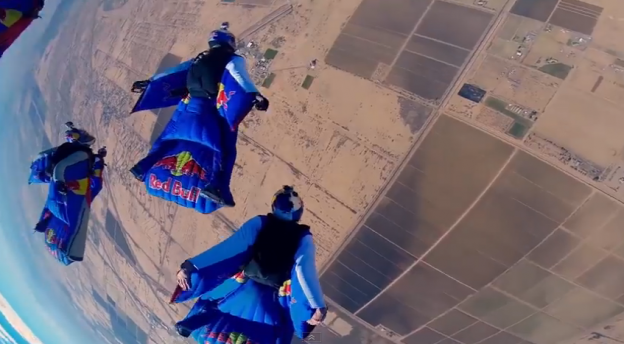
It’s often said that every company is a media company. Red Bull has embraced that maxim in a full-throated way.
Not only does the Austrian energy drink maker create TV shows, magazines, movies, books, music and more, but they also distribute their creations everywhere from newsstands, to theaters, TV, YouTube, mobile apps and, of course, the Web.
What makes them rare, if not unique, as a consumer brand, though, is that so much of the media they create stands on its own, as true media, enjoyed for its entertainment or informational value — rather than as, simply, marketing.
Werner Brell, managing director of Red Bull Media House, said in a rare public appearance at the Content All Stars summit in New York a few weeks ago: “We were creators, producers and distributors” of Felix Baumgartner’s record-breaking leap from outer space to Earth, which got 9 million concurrent views on YouTube. “We owned the entire project.”

Building a Media House
The Media House, created six years ago as a separate arm of the company to create what Brell called “premium” media, produces and sells high-end art and photography coffee table books, a yearly calendar, DVDs of adventurers exploring forests and fjords, and TV shows.
Their latest movie, “On Any Sunday, The Next Chapter,” will be in theaters across the U.S. this month.
Their Red Bulletin lifestyle magazine has a circulation of more than 3.1 million per month globally, via newsstands and through newspapers.
They license their media to Discovery Channel, Netflix, Crackle, Nintendo “and many more,” Brell’s colleague Patrice Radden told me in an email.
And, they have sales teams throughout key cities in the U.S. and Europe, selling advertising spots to other big brands such as Nike, Casio, Dodge and Patagonia in the U.S., alone.
They sell advertising and sponsorship packages for their 13-episode action sports TV series, broadcast by NBC, which also sells ads for the show.
They’re proud, Radden said, that their content reaches “the coveted and elusive young demographic across the globe,” which is certainly one reason other advertisers will pay for the exposure.
“We bring the age demo down for NBC,” Brell quipped.
While none of what they do with media “is record breaking for media companies, it’s pretty unique for a brand that’s known for selling energy drinks,” Brell said. “We create more than 600 pieces of content every year.”
What’s a Real Media Company?

Werner Brell
Silicon Valley journalist Tom Forenski wrote that real “media companies don’t create media about themselves,” citing it as a stumbling block for so much of content marketing.
Yes, while Red Bull’s media often feature their logo, they seldom overtly feature the beverage.
“Have you seen an image of our drink, yet?” Brell asked, rhetorically, at the Content All Stars show, after showing minutes of snowboarders, musicians, concertgoers, skaters and other athletes and fans in the media they’d produced. He was drinking a Red Bull on stage.

Making Money From Marketing
The media Red Bull creates — whether action shots on mountain tops or popular musical groups’ albums and concerts — comes at a cost that isn’t justified by sales of their beverages, alone.
Financial return on the money they put into their media is “something we grapple with on a daily basis … it’s obviously expensive,” Brell said when I asked about ROI. “What we do always has to come with some form of paycheck, whether advertising, licensing or a coproduction deal,” to help defray the costs.
Red Bull is a privately held company, and so doesn’t reveal the breakdown of the billions of euros it earns every year.
Still, they don’t, Brell hinted, recoup their entire investment in media, and measure some of the ROI in impact. “It’s a mixture of value, engagement and the dollars,” he said.
The company also spends money on traditional advertising. (They had to pay $13 million after losing a lawsuit that said their slogan, “Red Bull gives you wings,” was misleading, MediaPost reported last month.)
The Media House doesn’t, though, buy advertising to promote their media, Radden said.
They do pay close attention to the audiences they’re reaching, and how.
They discovered, for example, that by serializing a Web show about athletes on YouTube, putting them at a consistent day and time, they “immediately tripled the duration of viewing and engagement,” Brell said.
They hope with a documentary-style show on CBS to attract more women, and some older viewers, Brell said.
But they won’t be looking to turn their media efforts profitable, Brell noted. “If it were pure dollars [they were after], we probably would have to leave a little bit our really stringent adherence to what the brand has to represent,” he said.
Still, that they can sell, license and advertise in what they produce shows it is not just content, but entertainment and information — what I would call media.
I joked to Brell that a toilet paper company couldn’t do what Red Bull is doing, and he vehemently disagreed.
There are, he said, rules that any brand — can live and die by to create media: Know your brand and stand by its ethos, be relevant and authentic, surprise and innovate (“don’t be a copycat”), be consistent, and tell a real story.
An award-winning journalist and MBA, Dorian Benkoil ( @dbenk ) is founder of The MediaThon , a hack-a-thon for media makers, and Teeming Media , a digital media management consultancy focused on helping publishers make media more effective. He developed and executed sales and marketing strategies for PBS MediaShift.
Comments are closed.
Follow us on Social Media
- EducationShift
- Social Media
- Global View
- Sponsorships
- MediaShift Events
- MediaShift Podcast

Mark Glaser
- Privacy Policy
- Terms of Use
- Copyright MediaShift 2016
How Red Bull’s Content Strategy Got Its Wings
When you think of brand journalism, a number of things come to mind: blogs, social media channels, off-site branded content. But one thing that usually doesn’t come to mind is the idea that a brand could own an entire media network. Red Bull, the popular energy drink, supports its content strategy with just that foundation, though, owning its very own Red Bull Media House .
Although Red Bull was founded in 1987 by Austrian entrepreneur Dietrich Mateschitz, the Red Bull Media House was launched in 2007 and produces just about every type of digital and traditional content you could image. It operates a TV station; prints one of the biggest magazines in the world; produces documentaries, movies and music; and runs a very thorough digital strategy, the focus of our interest here. So, here’s how it’s done.
The Beginning
Red Bull’s content creation process centers around sports and cultural events and projects, and its strategy has been in the making for nearly 25 years.
The Red Bull team has created a multimedia experience from the start, incorporating film, photography and stories built for broadcast, print and digital media partners.
It wasn’t until 2007, though, when the brand formalized the content production process by launching Red Bull Media House. Headquartered in Salzburg, Austria with a North American base extended to Santa Monica, Calif. in January 2011, the media house controls the production, collection and distribution processes for all Red Bull content. Today, Red Bull Media House employs more than 400 people around the world.
Going Big with Digital Content
When it comes to digital media, Red Bull Media House runs more than 900 domains in 36 languages under the umbrella of RedBull.com.
RedBull.com covers all of its digital bases, with an offering of web TV, web radio, online games, newsfeeds and digital databases.
And if you’re curious about where all of Red Bull’s iPhone and iPad apps come from, you guessed it, the Media House is in charge of building and launching Red Bull’s mobile apps. Stop by the App Store some time to check out the Red Bull TV iPhone app or the Red Bulletin and Red Bull Illume HD apps for iPad — with them, you’ll have a pretty in-depth look at some of the most visual content created by Red Bull’s very own media empire. For a look at one of its mobile app games, check out Red Bull X-Fighters. ( Read more about Red Bull TV here .)
As it has carved a niche in the sports arena, Red Bull is associated with competitiveness and games—thus, it has launched a number of games accessible via Facebook or RedBull.com, where the games are hosted. One of the more visually-pleasing and simply adorable offerings in the line-up is the Soapbox Racer game.
Getting Social
The Media House also takes care of Red Bull’s social media strategy, including the brand’s presences on Twitter , Foursquare , Instagram , YouTube and its plethora of Facebook Pages.
YouTube is perhaps Red Bull’s biggest social strong suit. It joined as one of YouTube’s inaugural action sports content producers. And to date, nearly 300 million YouTube views have been generated from Red Bull content, making Red Bull Media House one of the top five sports content producers on YouTube globally.
This month, Red Bull upped the ante by launching 13 new episodic series to its YouTube channel. These shows will chronicle the day-to-day lives and competitions of some of the world’s most popular athletes from a variety of sports, including skateboarder Ryan Sheckler, motorcross star Travis Pastrana, surfer Jamie O’Brien and trials cyclist Danny MacAskill.
Across the rest of the socialverse, Red Bull stays active, interacting with tweeters , checking in to sports events and of course, disseminating content.
Red Bull seems to be benefiting from operating its very own media company. Have you heard of any other non-media brands with separate media operations? If so, let us know about them in the comments below.
Get better at your job right now.
Read our monthly newsletter to master content marketing. It’s made for marketers, creators, and everyone in between.
Trending stories

A Guide to Crafting the Perfect Content Format Mix for Audience Engagement

In Tough Times, Self-Aware Marketing Helps You Stand Out & Save Money

Why It’s Important to Focus on Creative Content Marketing

Diverse Stock Photos Done Right

4 Reasons To Add Customer Storytelling to Your Marketing Mix

Case spotlight: Red Bull Spreads Its Wiiings

Author perspective
Who – the protagonist.
The late Dietrich Mateschitz , co-founder of energy drinks company Red Bull .
Since gaining a foothold in petrol stations and as an alcoholic mixer in clubs and bars in the late 1980s, Red Bull has grown to become the world’s third most valuable soft drink brand (in 2021 its value stood at $8.1 billion).
The Austrian brand’s soft drink range includes the original product, Sugar Free and Total Zero formulations, as well as various flavoured editions such as cactus fruit.
Estimated to reinvest over 30% of revenues in marketing, Red Bull is perhaps better known for its activities outside of selling its core product.
To name but a few, projects range from a music academy and e-sports, to sponsoring over 800 top athletes, to owning multiple sports teams around the world, including the hugely successful F1 team Red Bull Racing , which has won multiple constructors’ and drivers’ championships - all of which produce engaging content promoted via Red Bull Media House.

Two new brand extensions threatened to alienate its loyal consumers and dilute Red Bull’s carefully cultivated anti-brand brand image.
The two products in question were the functional fashion line AlphaTauri and The Organics by Red Bull, a collection of premium sodas.
Whilst Red Bull wanted to disrupt and innovate with AlphaTauri and The Organics, it is unclear who the target customer is and to what degree the parent brand and its organisation can support a non-energy drink and high-end fashion line.
AlphaTauri was formed in 2016, and Red Bull’s second F1 team, Scuderia Toro Rosso, was rebranded as Scuderia AlphaTauri in 2019.
Meanwhile, in 2018, Red Bull Simply Cola was the latest product to be added to The Organics portfolio, after its initial failure in 2008 as part of Red Bull’s standard range.
Mateschtiz hails from Austria, with Red Bull’s global headquarters based in the country in Fuschl.
But, Red Bull is a worldwide entity, with 13,610 employees (as of the end of 2021) around the world and it is one of the most recognisable brands on the planet.

Both AlphaTauri and The Organics relied on the endorsement of their parent brand.
Ultimately, could Red Bull envisage both entities conquering new markets? Or could the association with Red Bull prove limiting? Most worryingly, would Red Bull’s loyal customer base feel alienated by these premium products? Critically, could the company’s carefully honed marketing formula be successfully deployed in these new markets, or did they require a different approach?
AUTHOR PERSPECTIVE
Appetite for a second case
Nader said: “Over the years, I consistently received queries from colleagues about whether I planned to update the award-winning Red Bull case I co-authored in 2005.
“The media landscape has significantly changed, and Red Bull Media House is a leader in combining physical experiences and engaging consumers digitally. What triggered my decision to do so, eventually, was the renaming of their second F1 team to AlphaTauri in support of their fledgling functional-fashion label. This came right around the same time as their launch of the non-energy drink range The Organics by Red Bull. Both decisions hold inherent tensions - potential synergies and dis-synergies - that promised a rich classroom discussion. Both decisions also begged the question as to whether Red Bull’s formidable marketing system was fit for purpose, or whether they needed to adapt their rather unique approach.
“The old case was therefore reborn as one of the main actors in a new drama.”
Key highlights
Nader continued: “A key highlight for me was being able to have an excuse to immerse myself into the world of Red Bull, both as a consumer and as an observer of their business practices. The organisation has created an enviable balance between running a well-oiled marketing machine that fosters rather than stymies creativity to power it. This started top down with the late Dietrich Mateschitz and his top team of marketers that have now led the brand for over two decades.
“A second highlight for me was writing the teaching note. I had not previously delved deeply into topics such as customer engagement and content marketing. Reviewing the academic and practitioner literature on these topics provided me with a much more solid and nuanced understanding and a structured means to convey them to my students.”
Favourite teaching case
He explained: “I currently use the case as the capstone case in the MBA marketing core, in an open enrolment executive education programme, and with individual client companies. I can say without hesitation, that this has been my favourite case to teach in my 30 years in the classroom. The brand literally brings energy into the classroom and allows for an academic and practical discussion of key marketing concepts - from engaging consumers emotionally through experiences to strategically building the core concepts using product-brand portfolio stretch. It is a brand everyone knows, but also one few have thought about systematically from an operational perspective.”

Inspiring subject
He added: “It is simply incredible for students to appreciate what Red Bull has been able to do with a mere soft drink, and it challenges everyone to think about how they can formulate a consumer-centric purpose that inspires new ways of engaging current and potential consumers. Simply by reviewing their marketing approach and asking, 'How would this look for your brand?' has already inspired brands in the luxury, financial services and consumer goods space to behave differently.
“The case is also a ‘safe’ one to teach, as there is no right answer regarding the brand-stretch decisions. It allows students to appreciate inherent tensions in any such decisions, and how executing and monitoring a strategy with these tensions in mind is as critical as formulating the ‘right’ strategy in the first place.”
Case writing tips
Nader commented: “First, for me, a case typically starts with a compelling business situation that I have no easy or preconceived answer to. This is not only key to stimulating classroom discussion, but also to hold my attention throughout the writing process.
“Second, I have to be able to develop, for myself, a solid academic understanding of the forces at play. This provides the core of the teaching note and a way to crystallise key learnings.
“Third, I was a presenter at The Case Centre’s webinar ‘ The Ingredients of an Award-Winning Case ’ where I summarised a three-act structure - setup, confrontation and resolution - that highlights the importance of context, strategic alternatives, and decision criteria. We also learn through stories, and this structure allows everything to hang together using a story narrative.”
Additional materials
Nader concluded: “ I have not only provided a detailed teaching note but also shared an extensive set of PowerPoint slides and engaging videos for instructors to use . These materials will allow instructors to pick and choose the slides and videos that will permit students to viscerally experience key topics and make memorable the key lessons they want their students to take away.”

The protagonist

Educators can login to view a free educator preview copy of this case and its accompanying teaching note.
View more cases in the spotlight
Stay in touch with all the latest case news and views in our free newsletter, Connect .
Read it online or sign up to have it delivered direct to your inbox!

Discover more


IMAGES
COMMENTS
Award-winning content, from two-minute shorts that highlight spectacular stunts to feature-length documentary films that paint poignant portraits — they all require the right tools to support the Red Bull Media House teams in their quest to showcase athletes and artists as they pursue their visions and ideas.
Red Bull Media House Banks on AMD for Storytelling Excellence. Explore how Red Bull Media House, the award-winning boutique film operation affiliated with the Austrian energy drink manufacturer is using AMD Threadripper™ PRO processors to put extraordinary events to film.
Using AWS for the Edge solutions, Red Bull Media House is building an infrastructure to support a consistent hybrid experience. Rather than invest in fixed servers, Red Bull Media House powers its media workstations using Amazon Elastic Compute Cloud (Amazon EC2), which provides secure and resizable compute capacity for virtually any workload ...
The Media House, created six years ago as a separate arm of the company to create what Brell called “premium” media, produces and sells high-end art and photography coffee table books, a yearly calendar, DVDs of adventurers exploring forests and fjords, and TV shows.
Edebaldo Martinez - Fall 2019. How might we create new and engaging connections with young consumers more often in a mobile-native experience with Red Bull’s current and new touchpoints. Design Challenge Kick-Off. Red Bull Media House Design Team. “Designing Locally but thinking Globally ” Secondary Research. Personalization.
Red Bull runs its own media house, with over a thousand employees, who are responsible for building the brand and all other marketing activities (Red Bull, 2018a). The media house runs several branded entertainment channels, displayed in figure 1. Through the channel of printed material, The Red Bulletin an active men’s lifestyle magazine is for
The Red Bull team has created a multimedia experience from the start, incorporating film, photography and stories built for broadcast, print and digital media partners. It wasn’t until 2007, though, when the brand formalized the content production process by launching Red Bull Media House.
This case study highlights the importance of understanding your audience, crafting a unique brand narrative, and leveraging digital platforms to connect with consumers in meaningful ways....
Red Bull Media House is a leader in supplying consumer content, attracting a global audience by reporting on the world’s best athletes in extreme sports. To improve its own performance, the IT team selected a workflow management system using Quantum StorNext software for sharing and archiving content. StorNext & Scalar Series “
“The media landscape has significantly changed, and Red Bull Media House is a leader in combining physical experiences and engaging consumers digitally. What triggered my decision to do so, eventually, was the renaming of their second F1 team to AlphaTauri in support of their fledgling functional-fashion label.